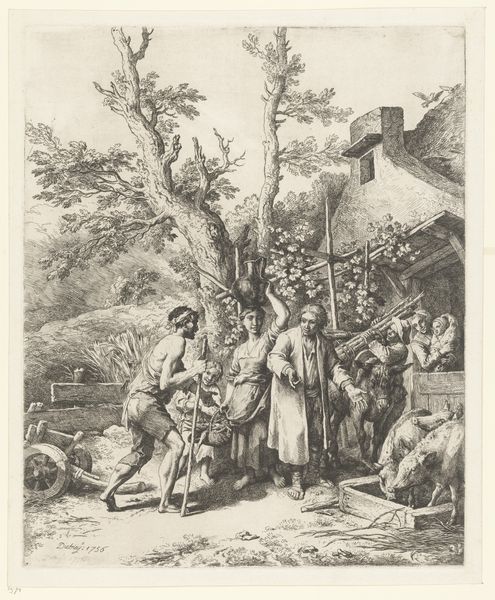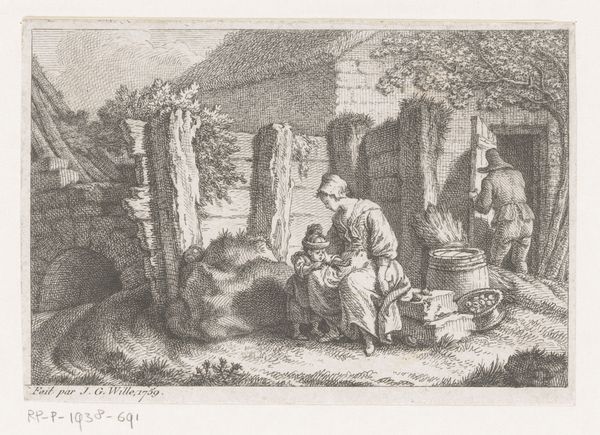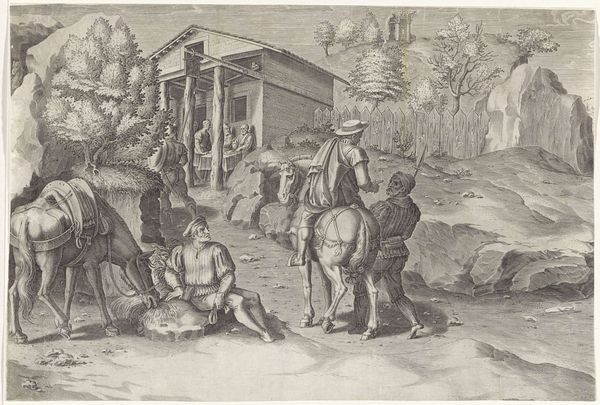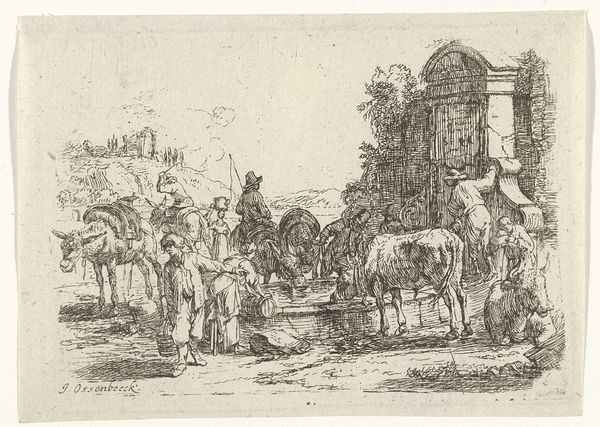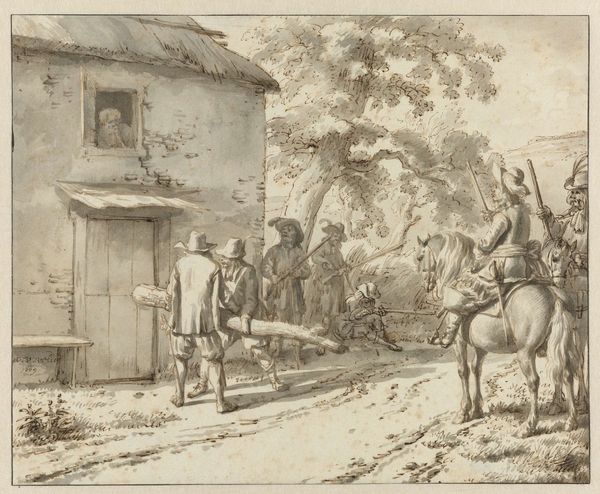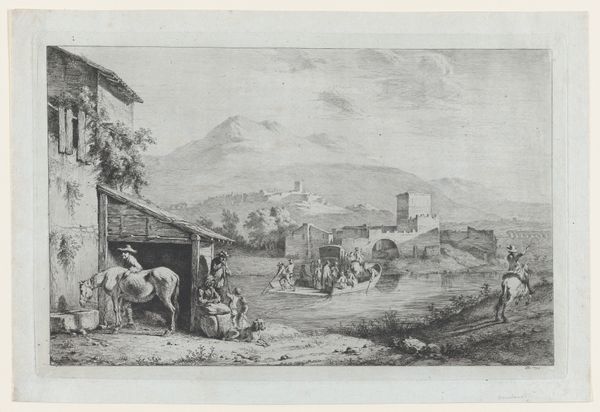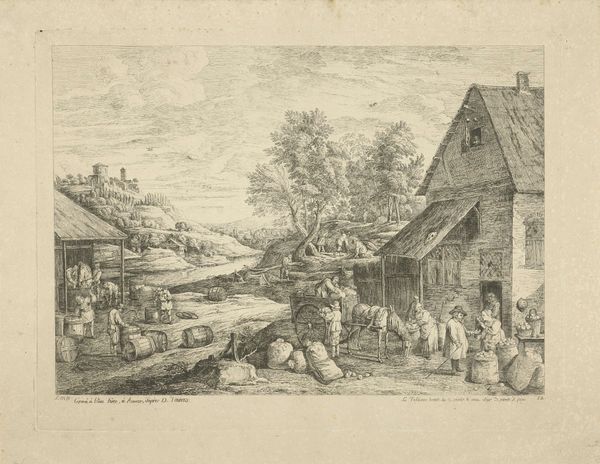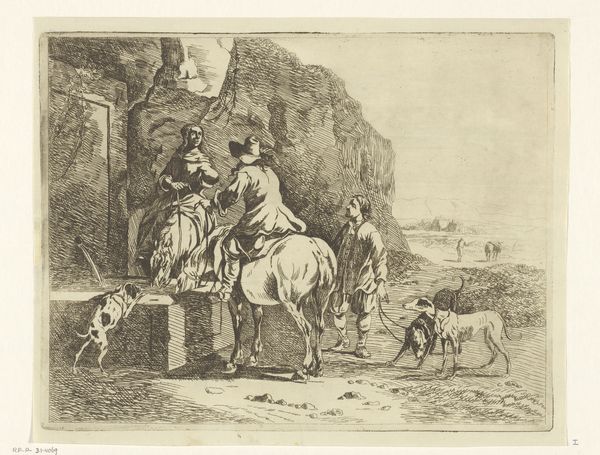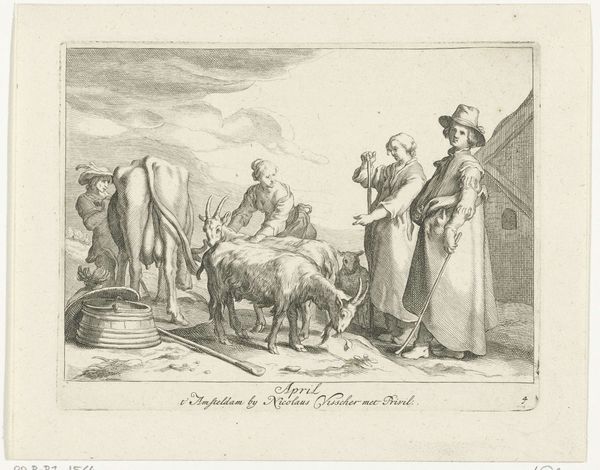
drawing, print, etching
#
drawing
# print
#
etching
#
landscape
#
romanticism
#
horse
#
genre-painting
#
history-painting
Dimensions: plate: 7 x 9 3/4 in. sheet: 7 1/4 x 10 in.
Copyright: Public Domain
This print, Cossack at the Well, was made by Johann Christoph Erhard in the early 19th century, using etching on paper. The artist would have coated a metal plate with wax, drawn into it with a sharp needle to expose the metal, then bathed it in acid. The acid bites into the exposed lines, creating grooves that hold ink. The linear quality of etching lends itself well to the scene’s detailed depiction of architecture, figures and the natural world. Look at how Erhard captures the textures of stone, wood, and fabric. Consider the labor involved in building the well, constructing the wagon, and weaving the textiles. It shows us the realities of everyday life for the working class. Erhard used hatching and cross-hatching to create areas of light and shadow. Note the way he uses this technique to model the forms of the figures, and to create a sense of depth in the landscape. The print is not just an image, but a record of a specific time and place, and the labor that went into shaping it. It also challenges the traditional hierarchy between art and craft, suggesting that both are equally valuable forms of cultural expression.
Comments
No comments
Be the first to comment and join the conversation on the ultimate creative platform.

